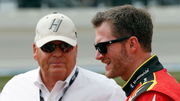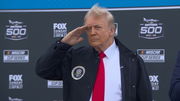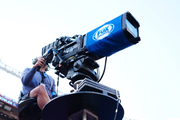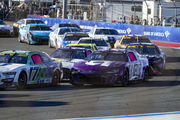
USA Today via Reuters
Feb 3, 2024; Los Angeles, California, USA; NASCAR Cup Series driver Brad Keselowski (6) during media availabilities at Los Angeles Memorial Coliseum. Mandatory Credit: Gary A. Vasquez-USA TODAY Sports

USA Today via Reuters
Feb 3, 2024; Los Angeles, California, USA; NASCAR Cup Series driver Brad Keselowski (6) during media availabilities at Los Angeles Memorial Coliseum. Mandatory Credit: Gary A. Vasquez-USA TODAY Sports
NASCAR’s long-standing relationship with practice sessions has been a hot topic of debate among drivers, fans, and analysts alike. In recent years, the organization has faced criticism for streamlining race weekends—a move initially prompted by pandemic-related restrictions. While some welcomed the efficiency, others, like veteran driver Brad Keselowski, have championed the value of practice as an integral part of the sport.
The tug-of-war escalated when Pete Pastoni, a veteran journalist and SiriusXM host, controversially suggested NASCAR scrap practice altogether. His claim that eliminating practice would save costs and add unpredictability sparked a clash of perspectives. Keselowski, a staunch advocate for practice, pushed back, emphasizing its role in leveling the playing field and fine-tuning performance. For months, it seemed like a stalemate. But now, fans and teams alike have been gifted a pleasant surprise, NASCAR has announced changes to its practice and qualifying formats for the 2025 season, leaving fans cautiously optimistic.
ADVERTISEMENT
Article continues below this ad
Expanded practice: A step in the right direction
The 2025 NASCAR season will see a more structured and expanded approach to practice and qualifying across its three national series: Cup, Xfinity, and Craftsman Truck. While still a far cry from pre-2020 levels, the updated format reflects a compromise, balancing cost-efficiency with competitive integrity. Brad Keselowski’s persistent calls for more track time seem to have resonated, as NASCAR reintroduces longer and more consistent practice sessions.
The key changes:
– Practice Duration: Group practice sessions will increase from 20 to 25 minutes at most tracks. Superspeedways like Daytona and Talladega remain exceptions, though a 50-minute session will precede Daytona 500 qualifying—a noteworthy addition.
– Qualifying Simplification: NASCAR has streamlined qualifying to single-round time trials at most tracks. Short tracks will allow drivers to post their best of two laps, while road courses will feature 20-minute group sessions. Superspeedways retain their two-round format for added drama, determining positions 1-10 in a final showdown.
– Starting Positions: Gone are the convoluted row-by-row designations based on group results. Starting lineups will now directly reflect qualifying performance, a change fans have been clamoring for.
Practice in 2025 increased to 25 minutes for each group. No practice on Superspeedways. For Cup, extended practice at Daytona 500 (Wed morning practice with qualifying that night), Clash, COTA, All-Star, Mexico, Indy, Phoenix-finale.
— Bob Pockrass (@bobpockrass) December 12, 2024
NASCAR Cup Series director Brad Moran described the changes as a return to the sport’s roots. “We’ve gotten a lot of feedback throughout the year,” Moran said. “We really wanted to take a fresh look at it. This is about taking small steps toward what we used to do while keeping things manageable for teams and partners.”
The updated schedule also introduces new broadcasting plans that aim to make practice and qualifying more accessible to fans. NASCAR Cup Series sessions will air on Prime Video in the first half of the season, transitioning to TNT Sports on Max and TruTV for the latter half. Special events like the Daytona 500 and the All-Star Race will remain under FOX Sports’ umbrella.
For the Xfinity Series, The CW will handle practice and qualifying broadcasts, while FOX Sports retains exclusive rights for Truck Series events. This diverse broadcasting approach aligns with NASCAR’s seven-year media rights deal set to begin in 2025, ensuring fans across platforms can tune in.
Brad Keselowski’s vocal advocacy played a significant role in driving these changes. As both a driver and co-owner of RFK Racing, Keselowski’s perspective carries weight. Earlier, he explained, “There is value to having some practice, even as a team owner. I don’t think the cost savings [from eliminating practice] are that significant.”
He’s argued that practice allows teams to identify issues and make adjustments, which can be critical for newer teams or during mid-season rule changes. “Limited practice can sometimes increase competitiveness,” he admitted, “but it can also stifle innovation.”
Trending
Fans react to the changes introduced by NASCAR
The announcement has triggered an array of reactions from fans, ranging from cautious optimism to outright skepticism. Many fans have applauded the decision to simplify qualifying procedures, calling it a long-overdue change. “Returning to single-round qualifying and using results directly for starting positions is a big win,” said one fan. “The previous process was way too convoluted. This feels like a step in the right direction.”
The inclusion of a 50-minute practice session at Daytona has also been widely celebrated. “Adding a 50-minute practice session at Daytona is HUGE!” another fan remarked. “Remember when these cars first hit the track during qualifying? Brutal.” This nod to expanded track time at a marquee event reflects NASCAR’s willingness to address safety concerns about cars going 200 miles an hour off the bat with no practice without overhauling the current structure entirely.
However, not all reactions have been glowing. Some fans question the decision to retain a second qualifying round at superspeedways. “What’s the purpose of keeping a second qualifying round at superspeedways? If we’re simplifying, why not go all the way?” one critic noted.
ADVERTISEMENT
Article continues below this ad
Others see the changes as a modest improvement but argue for more. “Feels like a Band-Aid fix,” said another fan. “One hour of practice for all would satisfy everyone. But hey, it’s better than 2024’s mess.”
For some, the new procedures represent a cautious step forward. “Small win for practice and qualifying. We’ll take it,” one fan concluded. “But there’s still room for improvement.” This sentiment reflects a broader consensus among fans: while the changes are a move in the right direction, they leave plenty of room for growth.
The 2025 NASCAR season promises to be one of evolution, driven by a desire to strike a balance between efficiency, competition, and fan satisfaction. While the practice and qualifying adjustments don’t mark a seismic shift, they represent a meaningful step in the right direction. As Brad Moran aptly put it, “This is better for the fans and the partners.”
ADVERTISEMENT
Article continues below this ad
For now, NASCAR fans can savor this “small win” while looking forward to the green flag at Daytona in February. Whether these changes will fully satisfy the sport’s passionate community remains to be seen, but for the moment, NASCAR has managed to earn a rare nod of approval.
ADVERTISEMENT
ADVERTISEMENT
ADVERTISEMENT
ADVERTISEMENT






